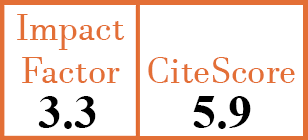Full Papers
What is the clinical significance of anti-Sm antibodies in systemic lupus erythematosus? A comparison with anti-dsDNA antibodies and C3
A. Flechsig1, T. Rose2, F. Barkhudarova3, R. Strauss4, J. Klotsche5, C. Dähnrich6, W. Schlumberger7, P. Enghard8, G.-R. Burmester9, F. Hiepe10, R. Biesen11
- Department of Rheumatology and Clinical Immunology, Charité University Hospital Berlin, Germany.
- Department of Rheumatology and Clinical Immunology, Charité University Hospital Berlin, Germany.
- Department of Rheumatology and Clinical Immunology, Charité University Hospital Berlin, Germany.
- Department of Rheumatology and Clinical Immunology, Charité University Hospital Berlin, Germany.
- German Rheumatism Research Center Berlin-Leibniz Institute, Germany.
- EUROIMMUN Medizinische Labordiagnostika AG, Lübeck, Germany.
- EUROIMMUN Medizinische Labordiagnostika AG, Lübeck, Germany.
- Department of Nephrology and Intensive Care Medicine, Charité University Hospital Berlin, Germany.
- Department of Rheumatology and Clinical Immunology, Charité University Hospital Berlin, Germany.
- Department of Rheumatology and Clinical Immunology, Charité University Hospital Berlin, Germany.
- Department of Rheumatology and Clinical Immunology, Charité University Hospital Berlin, Germany. robert.biesen@charite.de
CER9757
2017 Vol.35, N°4
PI 0598, PF 0606
Full Papers
Free to view
(click on article PDF icon to read the article)
PMID: 28281463 [PubMed]
Received: 13/07/2016
Accepted : 20/12/2016
In Press: 03/03/2017
Published: 13/07/2017
Abstract
OBJECTIVES:
To investigate the clinical value of anti-Sm antibodies in diagnosis and monitoring of systemic lupus erythematosus (SLE) and their ability to predict lupus flares compared with that of anti-dsDNA antibody and complement (C3) assays.
METHODS:
Autoantibodies against Smith antigen (Sm) and double-stranded DNA (dsDNA) in sera from SLE (n=232), myositis (n=26), systemic sclerosis (n=81), Sjögren’s syndrome (n=88), and rheumatoid arthritis patients (n=165) and healthy donors (n=400) were determined by using enzyme-linked immunosorbent assays (both from Euroimmun). New thresholds for both autoantibodies were calculated by receiver operating characteristics (ROC) curve analysis. Cross-sectional, longitudinal and predictive analyses of anti-Sm and disease activity were also performed.
RESULTS:
Sensitivities of 25.9% for anti-Sm (cut-off: 3.6 relative units/ml) and 30.2% for anti-dsDNA (cut-off 157.4 international units/ml) were obtained at a specificity of 99%. 14.8% of anti-dsDNA-negative patients were positive for anti-Sm, and more than half (51.4%) of anti-dsDNA-positive patients were also positive for anti-Sm. Anti-Sm antibodies were associated with age (p=0.0174), the number of ACR criteria (p=0.0242), the ACR criteria renal (p=0.0350) and neurologic disorder (p=0.0239), the BILAG category constitutional symptoms (p=0.0227), fatigue (p=0.0311) and cross-sectional disease activity (r=0.2519, p=0.0224). Although no correlations with lupus activity were observed in the longitudinal and predictive analysis, a remarkable association was found between anti-Sm and proteinuria.
CONCLUSIONS:
Anti-Sm antibodies are essential for diagnosis of SLE, especially in anti-dsDNA-negative patients. However, our data suggest that anti-Sm monitoring is only helpful in SLE patients with active lupus nephritis.



